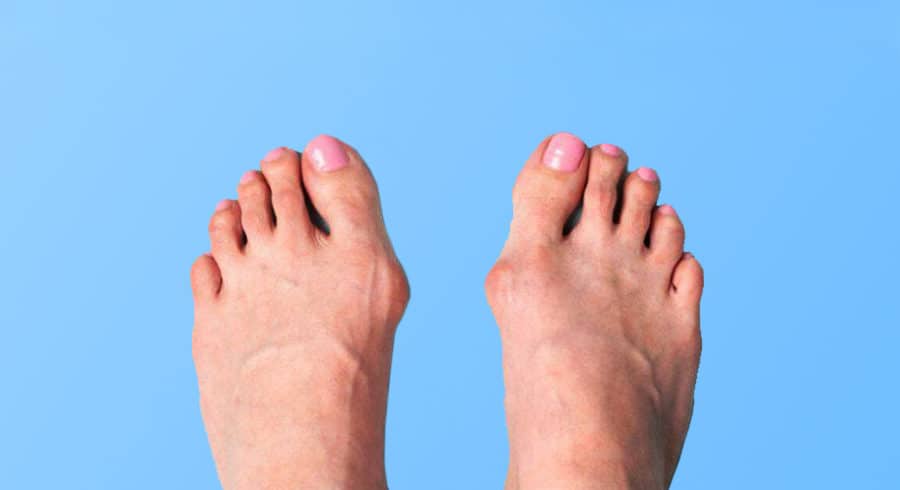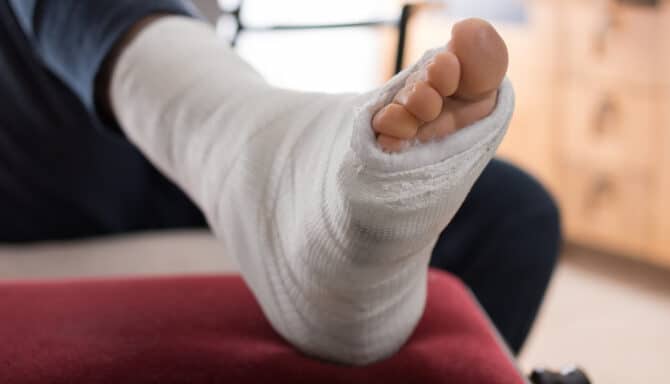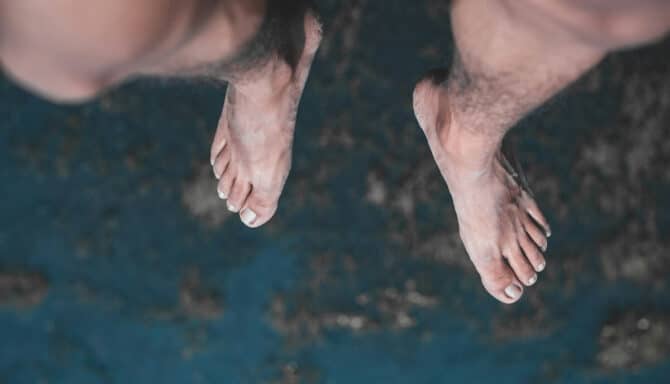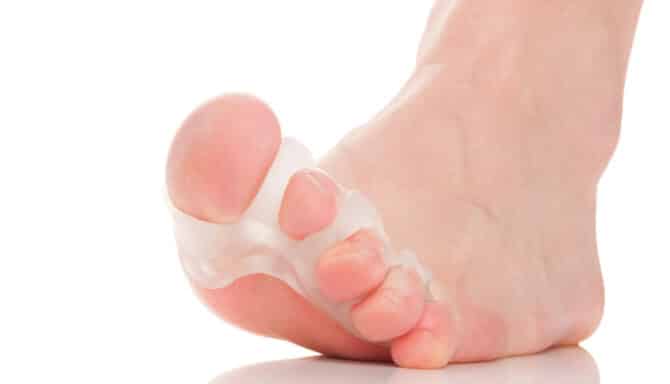If you have a lump on your big toe, you may be wondering whether it’s a Bunion or Hallux Rigidus. Both foot conditions affect the big toe and are bony outgrowths that are progressive conditions that get worse over time if not properly treated. The two conditions are also characterized by bumps on the big toe and can prove to be painful when wearing improper footwear.
Although hallux rigidus and Bunions affect the same joints, the two are quite different and require different treatment. And because our toes are the foundation of our legs, and bodies, proper treatment is essential. For one, you will prolong the joint. And second, proper treatment helps prevent other conditions that can result from compensation.
The most common distinction is where the bony outgrowth can be seen. Hallux rigidus is characterized by a bump on the top of the toe. A Bunion is an outgrowth along the edge of the big toe.
What is Hallux Rigidus?
Overview
Hallux rigidus gets its name from hallux, or big toe, and rigidus, which translates to stiff. In the simplest terms, hallux rigidus is a stiff big toe.
Hallux rigidus develops as a result of Osteoarthritis. As the metatarsophalangeal (MTP) joint breaks down over time, often due to repetitive use, the body responds by creating bone growth as a defence mechanism. As the area becomes increasingly crowded with bony outgrowth, one loses flexibility in their big toe, and the condition worsens as the first long bone (metatarsal) in the forefoot begins to rub against the first bone of the big toe. The bony outgrowth is known as osteophyte. In other words, a bone spur.

This area is particularly prone to Osteoarthritis and foot conditions because of the amount of weight the joint bears. As Harvard Medical School puts it, “every time you take a step, the MTP joint bends, allowing the foot to roll forward and push off. During this phase of the walking cycle, the joint supports 50% of the body’s weight.” Yes, 50%.
As the joint stiffens, and your toes lose flexibility, walking, and any other form of weight-bearing exercise for that matter becomes increasingly difficult.
Causes
This condition typically takes many years to develop. In its early stages, you may simply experience a tight big toe, or occasional pain when exercising. Alternatively, hallux rigidus can also develop after trauma to the joint. For example, stubbing your toe repeatedly, and not treating the injury, will contribute to joint decay over time. In fact, many professional athletes experience some form of hallux rigidus, either as a direct result of turf toe or because of years of intensive activity.
NBA legend Shaquille O’Neal is one such example, though he suffered from bone spurs in his little toes. Ballet dancers, thanks for the fact that they are routinely on their tiptoes, are also particularly prone to hallux rigidus.
Finally, hereditary defects and faulty foot mechanics can place additional stress on the joint, triggering arthritis.
Not all toe stiffness is the same. Minor joint stiffness is hallux limitus. Those with the condition have more flexibility and range of motion than those with rigidus, and bone spurs may also be absent. However, without the proper treatment, or ignoring it all together, the condition can quickly worsen. Unlike other injuries that you can injure, hallux rigidus is a progressive, and permanent condition.
Treatment
However, those with hallux rigidus can offset the limits of their big toe in ways to enhance their daily lives. Physical therapy, proper Orthotics, avoiding aggravating exercise, and strengthening the surrounding muscles that relieve pressure on the joint can all improve quality of life. More invasive options include surgery, including fusing the two bones, and a Cheilectomy, which is a surgical procedure to remove excess bone from the joint of your big toe.
You can read more about hallux rigidus and Bone Spurs here.
What is a Bunion?
Overview
Bunions, like hallux rigidus, affect the metatarsophalangeal (MTP) joint, which are the links between your foot and toes.
To make things confusing, the condition is actually known as Hallux Valgus. (Another ‘hallux’ term.)
Bunions occur when the first metatarsal bone of the foot turns outward and the big toe points inward, according to Harvard Health. Unlike hallux rigidus, hallux valgus is the result of your bones shifting, with the resulting protrusion going outwards, and not upwards like with hallux rigidus’s osteophyte.

There are Several Phases of bunions. To start, a small bump may appear on the outer edge of the foot. Over time, and if the bunion gets worse, the bump will grow, and the big toe will increasingly point inwards, sometimes crossing over your other toes.
Causes
Often, Bunions are the result of narrow-fitting shoes, which can force the big toe inward, scrunching all five toes together. High heels are one example. (In fact, bunions are 10 times more common in women than in men.)
Ill-fitting shoes are however just one of many causes. Genetics can also pass on bunions through generations. Additionally, your foot type can be a factor.
Treatment
Treatment and preventative measures include finding the Right Shoe, to reduce risks of Bunions from forming in the first place. However, like hallux rigidus, Bunions are a progressive foot condition. Surgery is necessary to actually remove a bunion. But, physical therapy and over-the-counter products can certainly reduce the need for surgery as generally non-invasive options are best.
Conservative Bunion management includes Custom Foot Orthotics, splints, bunions guards, toe separators, and Foot Exercises. For additional treatment options, read our blog on Effective Ways of Treating Bunion Pain.
Are you confused about whether you have hallux rigidus or a Bunion?
Book an appointment with a chiropodist at Feet First Clinic today for a professional diagnosis and appropriate treatment plan.









